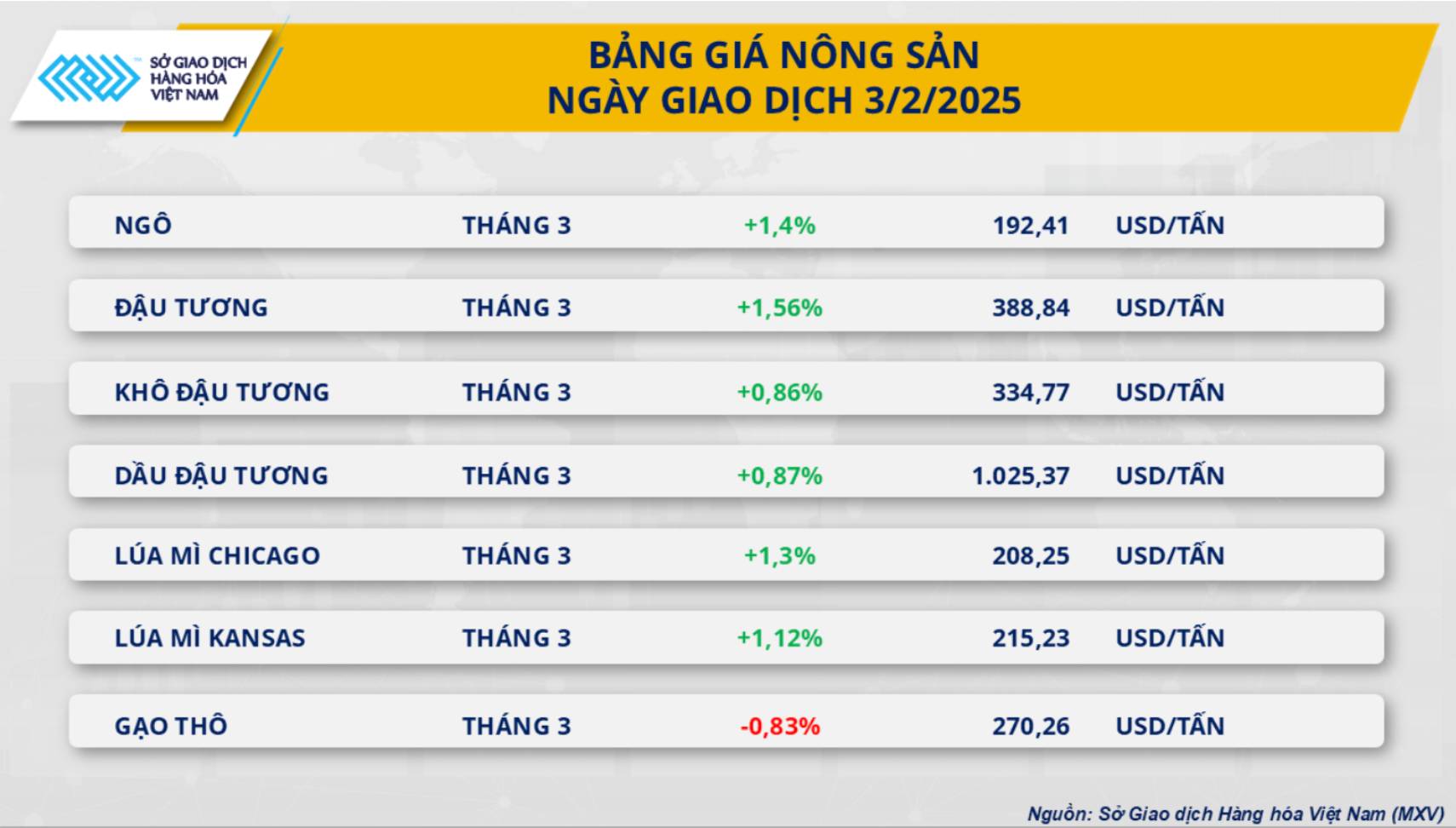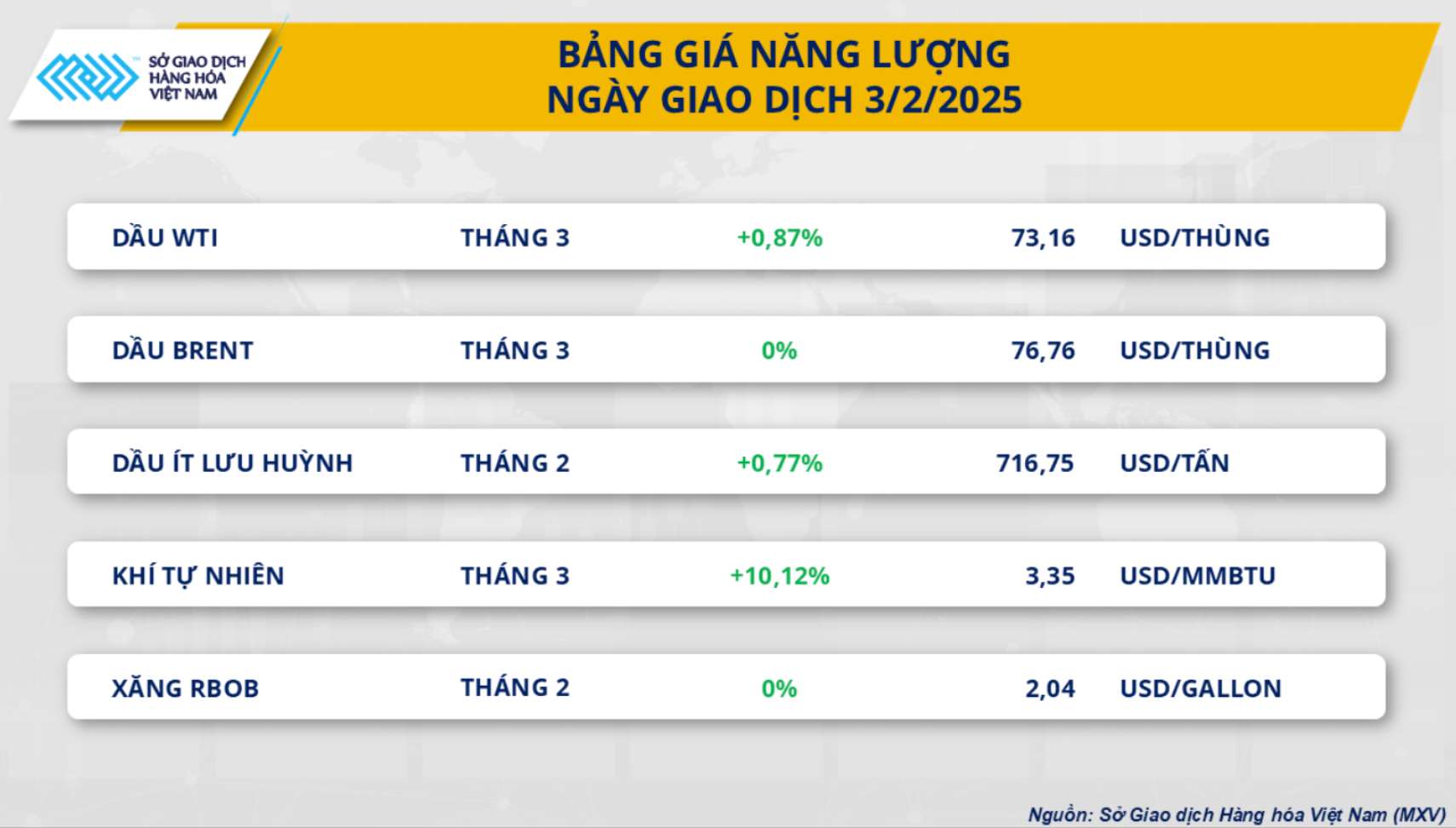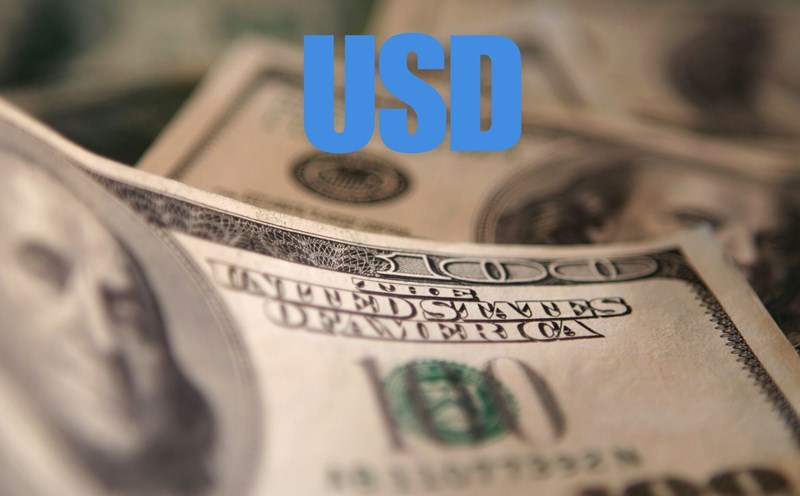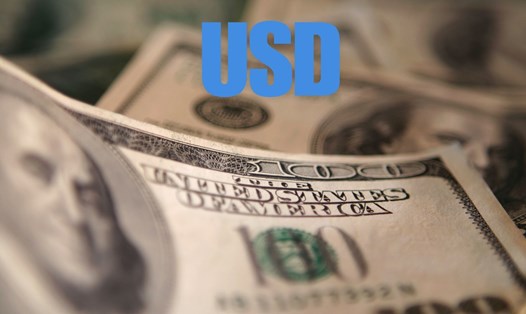On the morning of February 4, the Vietnam Commodity Exchange (MXV) reported that the world raw material market fluctuated strongly in the first trading session of the week. In particular, the agricultural product market had 6-7 items increasing in price simultaneously. At the end of the first trading session after the long Tet holiday, buying power dominated, pushing the MXV-Index up 1.11% to 2,311.82 points.

Soybean prices rebound
Closing the first trading session of February, soybean prices recovered more than 1.5% to 388 USD/ton, completely erasing the decrease in the previous session.

US President Donald Trump recently announced a one-month suspension of tariffs on Mexico and Canada. Mr. Trump said that the US and Mexico will take advantage of the one-month suspension to engage in further negotiations. Mr. Trump's decision to postpone tariffs on Mexico and Canada shows that Washington's tariff policy is more cautious, flexible and easygoing at the moment, thereby raising hopes in the market that negotiations with China will take place soon.
If the Trump administration also takes a softer approach to China, trade tensions between the two countries could be avoided, a positive sign for US soybean exports, helping to support prices.
Meanwhile, the weather in South America is clearly diverging, with Argentina experiencing drought and Brazil experiencing wet weather. Brazilian farmers are still struggling as wet conditions slow down the soybean harvest. Meanwhile, crops in Argentina continue to be affected by drought. The poor weather in South America was also a factor that boosted buying power in the market yesterday (February 3).
Since the beginning of the 2024-2025 crop year, the US has shipped a total of 34 million tons of soybeans, up from 29 million tons in the previous crop year. This shows that US export activities are relatively positive.
On the price chart, two finished soybean products, soybean meal and soybean oil, fluctuated in opposite directions. Soybean oil closed at its highest level in more than two months due to the US decision to postpone the imposition of tariffs on Mexico.
Natural gas prices spike more than 10%
The energy price list attracted attention with natural gas prices soaring more than 10%, and the prices of two crude oil products increasing slightly. Meanwhile, Brent crude oil (light sweet crude oil) and RBOB gasoline (blended gasoline) were unchanged, listed at $76.76/barrel and $2.04/gallon, respectively.

US manufacturing activity grew for the first time in more than two years in January, according to a survey by the Institute for Supply Management. The PMI (purchasing managers index) rose to 50.9, the highest since September 2022 and 1.7 higher than the index in December 2024. However, this recovery may not last long as Mr. Trump's tariff policies could increase raw material prices and disrupt supply chains.
On February 3, the Organization of the Petroleum Exporting Countries and its allies (OPEC+) agreed to maintain a policy of gradually increasing oil production from April and remove the US Energy Information Administration from the sources used to monitor production and compliance with oil supply agreements.
The Federal Reserve has expressed concern about how Trump’s tariffs will affect inflation, leaving interest rates unchanged for its latest policy meeting. At the same time, warnings that higher inflation could prompt the Fed to raise rates to counter rising prices could dampen energy demand by raising borrowing costs and slowing economic growth.
Natural gas prices have surged to a seven-day high on forecasts for colder temperatures in the United States, boosting demand for natural gas for heating. Tightening U.S. natural gas supplies have also supported prices. The EIA inventory report showed that U.S. natural gas inventories as of January 24 were 4.1% below the five-year average for the same period. This is the first time supplies have been below the annual average in two years.
In Europe, gas storage was only 55% full as of January 28, below the five-year seasonal average of 62%. This sent European natural gas prices to their highest level in 15 months.











